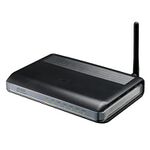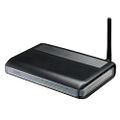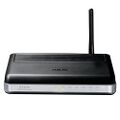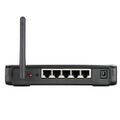ASUS RT-N10 rev A1
bgn (N150) | |||||||||||||||||
|---|---|---|---|---|---|---|---|---|---|---|---|---|---|---|---|---|---|
| Wireless-N150 Router | |||||||||||||||||
 | |||||||||||||||||
| Homepage | |||||||||||||||||
| Support | |||||||||||||||||
| Downloads | |||||||||||||||||
| Wikipedia | |||||||||||||||||
| InfoDepot Wiki | |||||||||||||||||
| WikiDevi.wi-cat.ru | |||||||||||||||||
| 3rd Party Firmware | |||||||||||||||||
| dd-wrt | |||||||||||||||||
| OpenWrt | |||||||||||||||||
| Tomato any flavor | |||||||||||||||||
| Gargoyle |
Status Unknown | ||||||||||||||||
| Platform | |||||||||||||||||
| Brand • Model • Rev |
ASUS RT-N10 A1 | ||||||||||||||||
| FCC ID | |||||||||||||||||
| Type |
wireless router | ||||||||||||||||
| Series |
RT-N10 | ||||||||||||||||
| CPU1 |
Broadcom BCM5356A1 | ||||||||||||||||
| CPU1 Type |
MIPS 74K | ||||||||||||||||
| CPU1 Speed |
333 MHz | ||||||||||||||||
| Flash1 Chip |
Macronix MX25L3205DM2I-12G | ||||||||||||||||
| Flash1 Size |
4 MiB4,194,304 B <br />32,768 Kib <br />4,096 KiB <br />32 Mib <br />0.00391 GiB <br /> (Serial) | ||||||||||||||||
| RAM1 Size |
16 MiB16,777,216 B <br />131,072 Kib <br />16,384 KiB <br />128 Mib <br />0.0156 GiB <br /> | ||||||||||||||||
| RAM1 Chip |
EtronTech Model? | ||||||||||||||||
| ETH chip1 |
Broadcom BCM5356A1 | ||||||||||||||||
| Switch |
Broadcom BCM5356A1 | ||||||||||||||||
| Ethernet Port Count |
1-100MbE-WAN 4-100MbE-LAN | ||||||||||||||||
| Wired Standard |
IEEE 802.3i/3u | ||||||||||||||||
|
802dot11 OUI: none specified | |||||||||||||||||
| Stock bootloader |
CFE | ||||||||||||||||
| Expansion IF types |
none specified | ||||||||||||||||
| Power |
9 VDC, 1 A | ||||||||||||||||
| Connector type |
barrel | ||||||||||||||||
| Other | |||||||||||||||||
|
Default IP address: 192.168.1.1 | |||||||||||||||||
| 3rd Party Firmware Support | |||||||||||||||||
| Retail | |||||||||||||||||
| Availability | End of Life | ||||||||||||||||
| FCC approval date | 16 July 2009 | ||||||||||||||||
| UPC |
610839043989 (UPC DB, On eBay) | ||||||||||||||||
| Newegg | N82E16833320042 | ||||||||||||||||
| ASIN |
B002X788V6 multiple uses | ||||||||||||||||
| Radio 1 | |||||||||||||||||
| Chip1 |
Broadcom BCM5356A1 | ||||||||||||||||
| Wireless interface OUI |
none specified | ||||||||||||||||
| Antenna Connector Type |
RP-SMA | ||||||||||||||||
| MIMO status |
1x1:1 | ||||||||||||||||
| Wireless Standard |
IEEE 802.11b/g/n | ||||||||||||||||
| 802.11n |
up to 150 Mbps | ||||||||||||||||
| 802.11g |
up to 54 Mbps | ||||||||||||||||
| 802.11b |
up to 11 Mbps | ||||||||||||||||
| WiFi Operating Frequency |
2.4 ~ 2.5 GHz | ||||||||||||||||
| Radio cor_rev |
21 | ||||||||||||||||
| |||||||||||||||||
For a list of all currently documented Broadcom chipsets with specifications, see Broadcom.
For a list of all currently documented ASUS device with specifications, see ASUS.
- • 150 Mbps - 1SS 2.4GHz 802.11n (40MHz chan.) = N150 class
Overview
1x1:1
Links of Interest
Forum threads
Reviews
Flashing
| NOTE: During configuration or flashing a device, the only things that should be hooked to the device is the computer and power. |
Flashing dd-wrt
| NOTE: It is recommended to use ASUS Firmware restoration tool for ASUS routers initial flash (use *.TRX file). |
| WARNING: Do not flash micro this unit! |
| WARNING: Requires K2.6 for DD-WRT, Do not flash anything else! |
Supported by dd-wrt as of = v24 SP2 - build 16789 - 20110616
Now Fully Supported with N Wireless
- Read the peacock announcement found here: http://www.dd-wrt.com/phpBB2/viewtopic.php?t=51486
- Do a Hard reset or 30/30/30 on the router
- Set a static IP on your computer to 192.168.1.7. Subnet mask should be 255.255.255.0.
- Connect the lan cable from your computer to a LAN port of your router. Make sure your router is plugged in. Nothing should be connected to your computer or the router except the lan cable between them. Turn your firewall and any wireless computer connections OFF.
- Power cycle the router (uplug the power from the router for 30 seconds and then plug it back in)
- Open your browser to 192.168.1.1 by putting that in the browser address window of your browser. You should open the linksys webgui and NOT a page that says Management Mode. If you see management mode, power cycle the router again.
- Leave the username blank and enter "admin" as the password
- Go to administration and firmware upgrade
- Navigate to the folder that you are using, and select dd-wrt.v24-16789_NEWD-2_K2.6_mini_RT-N10.trx
- Hit upgrade
- When you get a success, wait FIVE FULL minutes.
- At this point you can choose to put a different build on, depending on what you needs are.
- Reset your computer ethernet connection to auto IP and auto DNS
- Check for recommended builds here.
Flashing OpenWrt
| This device is NOT RECOMMENDED for future use with OpenWrt due to low flash/ram. DO NOT BUY DEVICES WITH 4MB FLASH / 32MB RAM if you intend to flash an up-to-date and secure OpenWrt version onto it! See 4/32 warning for details. |
| This device does not have sufficient resources (flash and/or RAM) to provide secure and reliable operation. This means that even setting a password or changing simple network settings might not be possible any more, rendering the device effectively useless. See OpenWrt on 4/32 devices what you can do now. |
| OpenWrt support for this device has ended in 2022. 19.07.10 was the last official build for 4/32 devices. |
| Devices with Broadcom WiFi chipsets have limited OpenWrt supportability (due to limited FLOSS driver availability for Broadcom chips). Consider this when choosing a device to buy, or when deciding to flash OpenWrt on your device because it is listed as supported. See Broadcom WiFi for details. |
OpenWrt Target: bcm47xx
OpenWrt Subtarget: mips74k
OpenWrt Package architecture: mipsel_74kc
Support started version: 10.03.1
Current supported version: 22.03.7
Unsupported Functions:
WiFi 2.4GHz
Please insert instructions here
Flashing Tomato
Please insert instructions here
Reverting
As reported by cdkiller here On the DD-WRT Forum
To restore original firmware disconnect all the cables except the one you will use on your computer doing the restore. Preferably set a static IP on your computer. Unplug the router power cable, press and hold the reset button and while holding it insert the power cable. Keep holding the reset button until the power LED starts to blink slowly, then you can release it. This means the router is in recovery mode. You can either TFTP a new firmware to it, or load the ip into a web browser to get the recovery interface, or you can use the ASUS firmware restoration Utility.
I recommend you to use the ASUS firmware restore utility, the instructions on how to use are in the manual and you can download the restore utility from the RT-N10 page on ASUS website.
Pictures
See also
- ASUS
- Embedded system/wireless router
- Embedded System Broadcom
- Embedded System BCM5356A1
- Broadcom
- Embedded System MIPS 74K
- Embedded System
- DD-WRT Supported
- OpenWrt Was Supported
- Tomato Supported
- Has Mimo Status
- Embedded System IEEE 802.11b/g/n
- Single-Radio Wireless Embedded System
- Wireless Embedded System
- English Documentation


